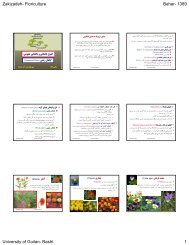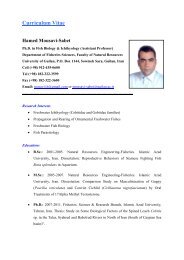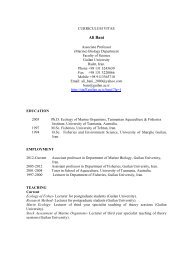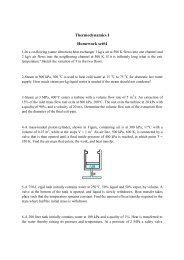Medical Tourism in Developing Countries
Medical Tourism in Developing Countries
Medical Tourism in Developing Countries
- No tags were found...
You also want an ePaper? Increase the reach of your titles
YUMPU automatically turns print PDFs into web optimized ePapers that Google loves.
Promot<strong>in</strong>g <strong>Medical</strong> <strong>Tourism</strong> ● 145Obstacle II: International Standards andAccreditation/Credential<strong>in</strong>gWhen shopp<strong>in</strong>g around for medical services, potential patients seek evidenceof quality. To the extent that the supply<strong>in</strong>g physician, <strong>in</strong>stitution, orcountry cannot provide satisfactory demonstration of quality, consumerswill take their bus<strong>in</strong>ess elsewhere. The <strong>in</strong>ability to provide high and consistentquality facilities, manpower, and processes, and the <strong>in</strong>ability to effectivelysignal that quality, <strong>in</strong>hibits trade <strong>in</strong> medical services. As noted byRashmi Banga <strong>in</strong> her review of the literature, barriers related to standards,certification, and <strong>in</strong>dustry-specific regulations are one of the fundamentalbarriers to trade <strong>in</strong> medical services. 12 To break through these barriers,<strong>in</strong>stitutions <strong>in</strong> dest<strong>in</strong>ation LDCs strive to abide by <strong>in</strong>ternational standardsand to ensure certification and licens<strong>in</strong>g. They are not alone—<strong>in</strong> fact, it isa worldwide trend that makes for a rapidly evolv<strong>in</strong>g global environmentand speeds up the expansion of medical tourism.This section <strong>in</strong>troduces <strong>in</strong>ternational quality standards and discusseshow medical <strong>in</strong>stitutions and medical personnel <strong>in</strong> develop<strong>in</strong>g countriesabide by them through accreditation and credential<strong>in</strong>g, respectively.International StandardsIn countries promot<strong>in</strong>g medical tourism, the public sector, together withprofessional societies and <strong>in</strong>ternational <strong>in</strong>stitutions, strives to uphold m<strong>in</strong>imumstandards. This <strong>in</strong>volves primarily the monitor<strong>in</strong>g of quality, safety,and uniformity. Both medical products and processes are subject to monitor<strong>in</strong>g.Among the former are pharmaceuticals, blood bags, medicaldevices, and implants. The latter <strong>in</strong>cludes specific requirements for cl<strong>in</strong>icalevaluations and sterilization procedures. It also <strong>in</strong>cludes <strong>in</strong>dependentmonitor<strong>in</strong>g of performance and accurate exchange of data as well as uniformlevels of hygiene. Standardization sets rules at multiple levels of detailand strives to micromanage processes such as label<strong>in</strong>g, premarket<strong>in</strong>g evaluations,post market<strong>in</strong>g surveillance, et cetera. Even <strong>in</strong>voices must be clear,<strong>in</strong> accordance with <strong>in</strong>surance rules, and must be capable of withstand<strong>in</strong>gscrut<strong>in</strong>y.Standardization is necessary <strong>in</strong> order to signal quality, safety, and uniformityto potential consumers. These consumers may be medical touristsbuy<strong>in</strong>g health-care services at the po<strong>in</strong>t of production (such as Italianpatients <strong>in</strong> India), or potential consumers away from that po<strong>in</strong>t of production(such as Italian importers of medical devices from India). 13 Consumersmight also be source-country <strong>in</strong>surance companies concerned with the
















